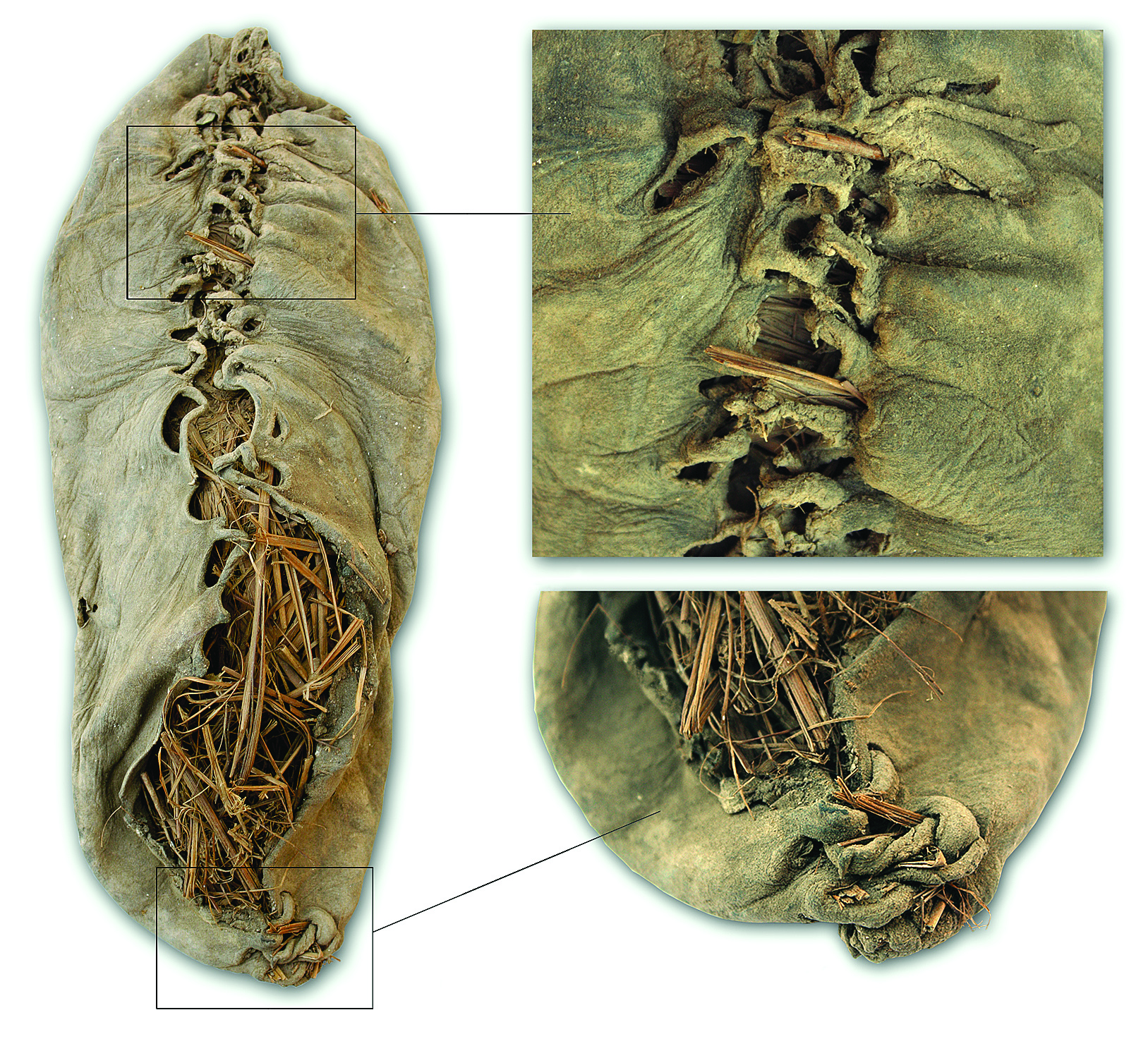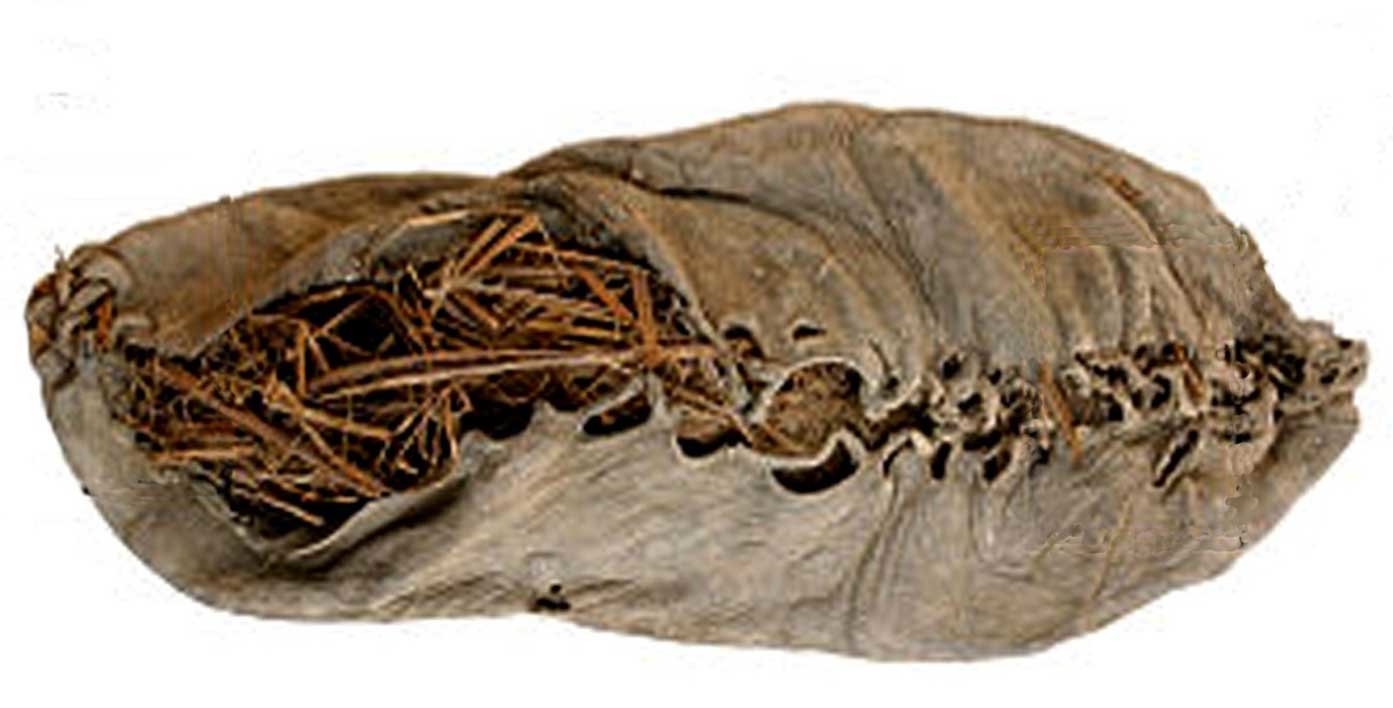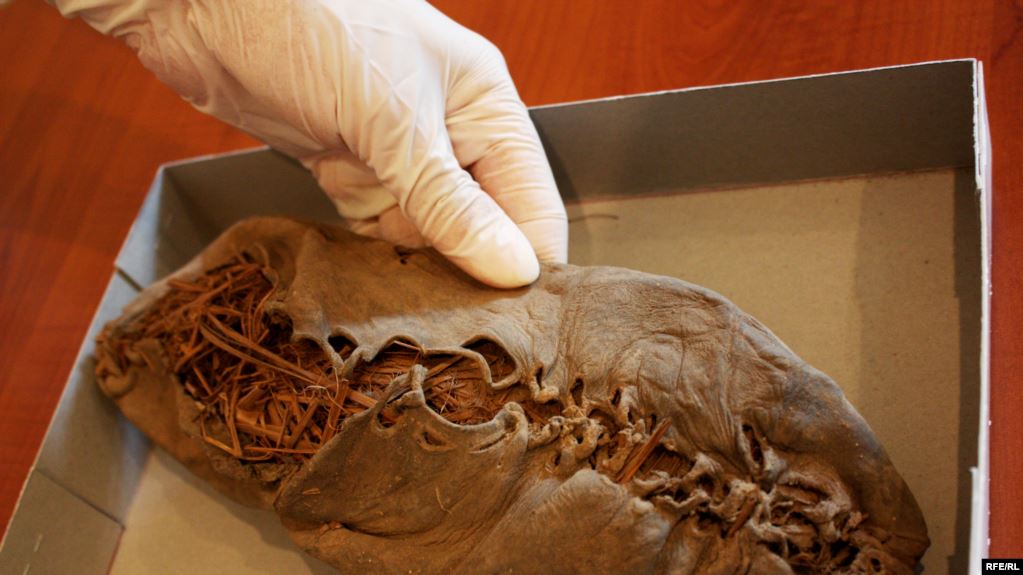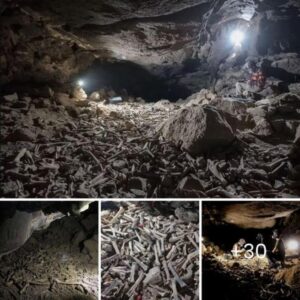In a cave in Armenia, a fully preserved shoe has been discovered, 1,000 years older than the Great Pyramid of Giza in Egypt and 400 years older than Stonehenge in the UK.
A team of global archaeologists found the 5,500-year-old shoe, the world’s oldest leather shoe, and their findings will be published in the online science journal PLoS ONE.

The cow-hide shoe dates back to ~ 3,500 BC (the Chalcolithic period) and is in perfect condition. It was made of a single piece of leather and was shaped to fit the wearer’s foot.
It contained grass, although the archaeologists were uncertain as to whether this was to keep the foot warm or to maintain the shape of the shoe, a precursor to the modern shoe-tree perhaps? “It is not known whether the shoe belonged to a man or woman,” said lead author of the research, Dr Ron Pinhasi, University College Cork, Cork, Ireland “as while small (European size 37; US size 7 women), the shoe could well have fitted a man from that era.”
The cave is situated in the Vayotz Dzor province of Armenia, on the Armenian, Iranian, Nakhichevanian and Turkish borders, and was known to regional archaeologists due to its visibility from the highway below.

The stable, cool and dry conditions in the cave resulted in exceptional preservation of the various objects that were found, which included large containers, many of which held well-preserved wheat and barley, apricots and other edible plants.
The preservation was also helped by the fact that the floor of the cave was covered by a thick layer of sheep dung which acted as a solid seal over the objects, preserving them beautifully over the millennia!
“We thought initially that the shoe and other objects were about 600-700 years old because they were in such good condition,” said Dr Pinhasi.
“It was only when the material was dated by the two radiocarbon laboratories in Oxford, UK, and in California, the US that we realised that the shoe was older by a few hundred years than the shoes worn by Ötzi, the Iceman.”
Three samples were taken in order to determine the absolute age of the shoe and all three tests produced the same results.
The archaeologists cut two small strips of leather off the shoe and sent one strip to the Oxford Radiocarbon Accelerator Unit at the University of Oxford and another to the University of California -Irvine Accelerator Mass Spectrometry Facility. A piece of grass from the shoe was also sent to Oxford to be dated and both shoe and grass were shown to be the same age.
The shoe was discovered by an Armenian PhD student, Ms Diana Zardaryan, of the Institute of Archaeology, Armenia, in a pit that also included a broken pot and wild goat horns.

“I was amazed to find that even the shoe-laces were preserved,” she recalled. “We couldn’t believe the discovery,” said Dr Gregory Areshian, Cotsen Institute of Archaeology at UCLA, US, co-director who was at the site with Mr Boris Gasparyan, co-director, Institute of Archaeology, Armenia when the shoe was found. “The crusts had sealed the artefacts and archaeological deposits and artefacts remained fresh dried, just like they were put in a can,” he said.
The oldest known footwear in the world, to the present time, are sandals made of plant material, that were found in a cave in the Arnold Research Cave in Missouri in the US. Other contemporaneous sandals were found in the Cave of the Warrior, Judean Desert, Israel, but these were not directly dated so that their age is based on various other associated artefacts found in the cave.
Interestingly, the shoe is very similar to the ‘pampooties’ worn on the Aran Islands (in the West of Ireland) up to the 1950s.
“In fact, enormous similarities exist between the manufacturing technique and style of this shoe and those found across Europe at later periods, suggesting that this type of shoe was worn for thousands of years across a large and environmentally diverse region,” said Dr Pinhasi.
“We do not know yet what the shoe or other objects were doing in the cave or what the purpose of the cave was,” said Dr Pinhasi. “We know that there are children’s graves at the back of the cave but so little is known about this period that we cannot say with any certainty why all these different objects were found together.” The team will continue to excavate the many chambers of the cave.
The team involved in the dig included; lead author and co-director, Dr Ron Pinhasi, Archaeology Department, University College Cork, Cork, Ireland; Mr Boris Gasparian, co-director and Ms Diana Zardaryan of the Institute of Archaeology and Ethnography, National Academy of Sciences, Republic of Armenia; Dr Gregory Areshian, co-director, Research Associate at the Cotsen Institute of Archaeology, University of California, US; Professor Alexia Smith, Department of Anthropology of the University of Connecticut, US, Dr Guy Bar-Oz, Zinman Institute of Archaeology, University of Haifa, Israel and Dr Thomas Higham, Oxford Radiocarbon Accelerator Unit, University of Oxford, UK.





